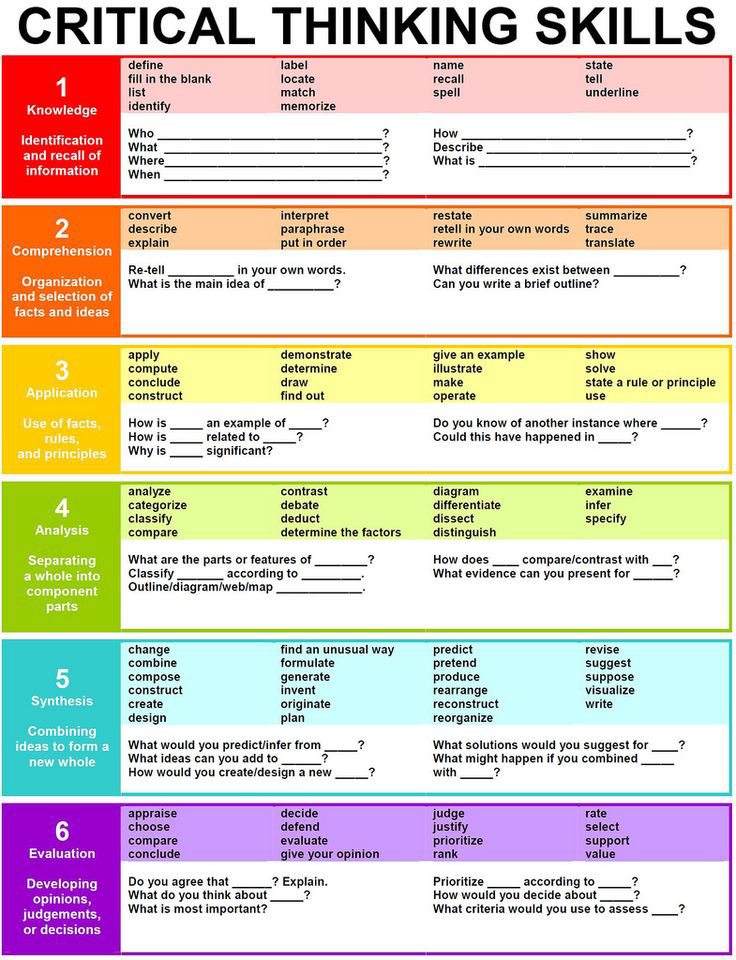Question Stems Framed Around Bloom’s Taxonomy
by TeachThought Staff
While critical thinking is a foundation rather than a brick, how you build that foundation depends on the learning process itself: exposing students to new thinking and promoting interaction with that thinking in a gradual release of responsibility approach.
Question stems can be a powerful part of that process no matter where the learner is. They can be used as metacognitive and higher-order thinking prompts for class discussions, prompting, cueing, pre-assessment, self-assessment, formative and summative assessment, etc.
See also 28 Critical Thinking Question Stems & Response Cards ($2.95)
The following graphic includes 25+ question stems framed around the early, non-revised Bloom’s Taxonomy are worth a gander.
In the ‘Knowledge’ category, question stems focus on helping students identify and recall information — these are often referred to as ‘literal’ questions, because a learner could more than likely point to a specific location in a text and say, “This is the answer.”
‘Comprehension’ question stems go a step further by prompting the students to make explain concepts or relationships in their own words, demonstrating that they can organize and select facts and ideas from within and across texts.
With ‘Application,’ students elevate their thinking by applying what they comprehend. They use facts, rules, and principles to relate their learning to other contexts, like text-to-text, text-to-world, and text-to-self connections.
In ‘Analysis,’ learners separate parts from a whole. They may categorize information, compare and contrast, or use a diagram to show relationships.
‘Synthesis’ requires students to combine ideas to form a new idea. Here, students are moving toward creation and ingenuity. They can make predictions and devise prototypes for presented problems.
Finally, ‘Evaluation’ question stems prompt students to share their own thinking, or to make judgments based on a body of evidence and/or opinion.
While this version of Bloom’s Taxonomy has since been revised, we see value in these question stems as resources to help students think more deeply, and to help teachers start them off on the right track.

Image attribution flickr enokson
